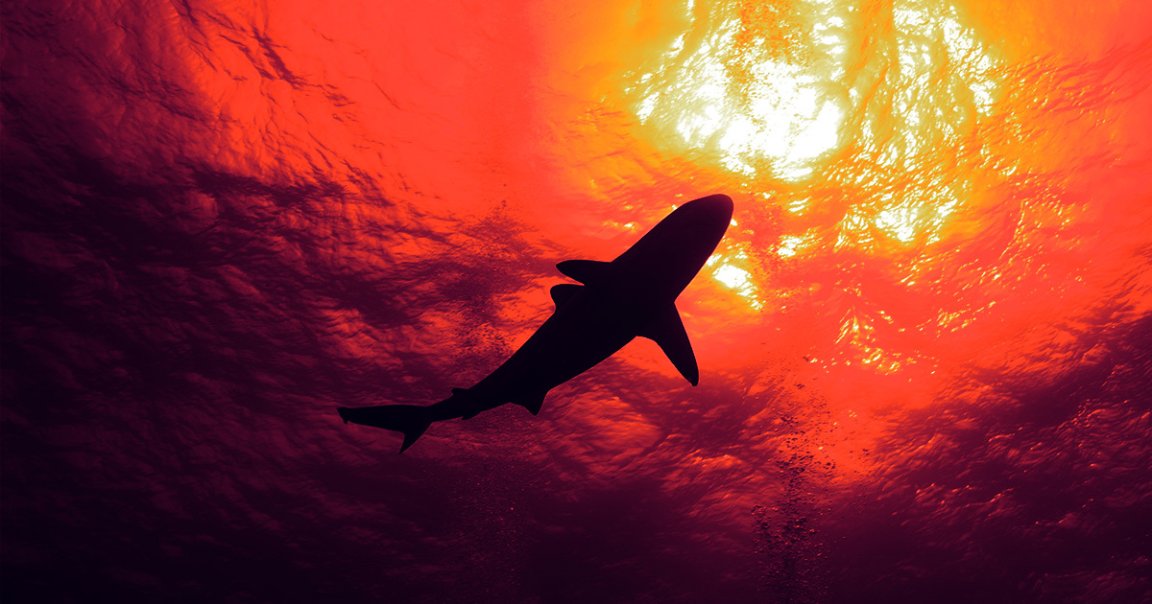
Pwned Shark
A team of marine scientists were tracking a pregnant female porbeagle shark. It wasn’t the largest of its ilk in the sea, but at over seven feet long and a maw lined with terrible teeth to match, the specimen was still a fearsome predator in its own right.
But their efforts to track it came to an abrupt end in 2021, when the porbeagle’s life did as well, in what has turned into a fascinating marine murder mystery.
Now, a new study published in the journal Frontiers In Marine Science details how, all of a sudden, the porbeagle’s satellite tags bobbed up to the ocean’s surface and started transmitting. And that could only mean one thing: something had eaten the porbeagle — and the most likely candidate is an even bigger shark.
“This is the first documented predation event of a porbeagle shark anywhere in the world,” said lead author Brooke Anderson, a marine biologist, said in a statement about the work.
Fish Food
Roaming the waters of the Northwest Atlantic ocean, porbeagle sharks can grow up to 12 feet long and weigh up to 500 pounds, but usually less. They also have lengthy lifespans, generally living for 30 to 40 years and even as long as 65. They’re survivors, in other words, and tough to kill.
The researchers captured this specimen in 2020, attaching two trackers. One was a fin-mounted tag that intermittently broadcasts its location whenever the shark makes it to the surface, and the other a pop-off satellite archival tag (PSAT), which records depth and temperature measurements, stored until the tag ‘pops-off’ and bobs to the surface, where it finally transmits its data.
PSATs are designed to detach after a certain length of time — but the one tracking the pregnant porbeagle started transmitting prematurely, just 158 days after being attached.
The recovered data showed that the pregnant porbeagle had been swimming at a depth of 2,000 to 2,600 feet during the day, and at roughly 300 to 600 feet during the night, with water temperatures ranging between 43 to 74 degrees Fahrenheit.
Then, an anomaly: in March 2021, the temperature stayed a constant 72 degrees for four straight days — a sure sign that the porbeagle had ended up in the belly of some ferocious sea creature.
Usual Suspects
Based on the climate of where the porbeagle was killed and when the grisly murder occurred, the researchers lined up two suspects: a short-fin mako shark, or a mighty great white shark.
Shortfin makos can be slightly longer than porbeagles, growing up to 13 feet long, but weigh twice as much at over 1,000 pounds. Known for their speed, they prey on fish, cephalopods, sea turtles — and yes, smaller sharks.
Great white sharks — which grow up to 20 feet long and weigh over 4,000 pounds — favor much larger game, including whales, dolphins and seals.
A great white would probably make short work of a porbeagle, and is the likelier candidate, the researchers said, because the tracker data didn’t show signs of a mako shark’s typical diving behavior.
There are fears, however, that this wasn’t an errant killing. “If predation is more widespread than previously thought, there could be major impacts for the porbeagle shark population that is already suffering due to historic overfishing,” Anderson said in the statement.
If true, the porbeagle could be in a lot of trouble: like many sharks, they have supremely slow reproductive cycles, meaning that yet another threat to its survival could be fatal for its population.
More on sharks: Watch Thousands of Sleeping Sharks Form a “Carpet” on the Ocean Floor